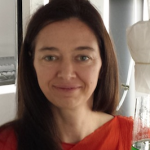Link to Pubmed [PMID] – 11571167
Appl. Environ. Microbiol. 2001 Oct;67(10):4638-47
Cyanobacteria of the genus Nodularia form toxic blooms in brackish waters worldwide. In addition, Nodularia spp. are found in benthic, periphytic, and soil habitats. The majority of the planktic isolates produce a pentapeptide hepatotoxin nodularin. We examined the morphologic, toxicologic, and molecular characters of 18 nodularin-producing and nontoxic Nodularia strains to find appropriate markers for distinguishing the toxic strains from the nontoxic ones in field samples. After classical taxonomy, the examined strains were identified as Nodularia sp., Nodularia spumigena, N. baltica, N. harveyana, and N. sphaerocarpa. Morphologic characters were ambiguous in terms of distinguishing between the toxic and the nontoxic strains. DNA sequences from the short 16S-23S rRNA internally transcribed spacer (ITS1-S) and from the phycocyanin operon intergenic spacer and its flanking regions (PC-IGS) were different for the toxic and the nontoxic strains. Phylogenetic analysis of the ITS1-S and PC-IGS sequences from strains identified as N. spumigena, and N. baltica, and N. litorea indicated that the division of the planktic Nodularia into the three species is not supported by the ITS1-S and PC-IGS sequences. However, the ITS1-S and PC-IGS sequences supported the separation of strains designated N. harveyana and N. sphaerocarpa from one another and the planktic strains. HaeIII digestion of PCR amplified PC-IGS regions of all examined 186 Nodularia filaments collected from the Baltic Sea produced a digestion pattern similar to that found in toxic isolates. Our results suggest that only one planktic Nodularia species is present in the Baltic Sea plankton and that it is nodularin producing.
